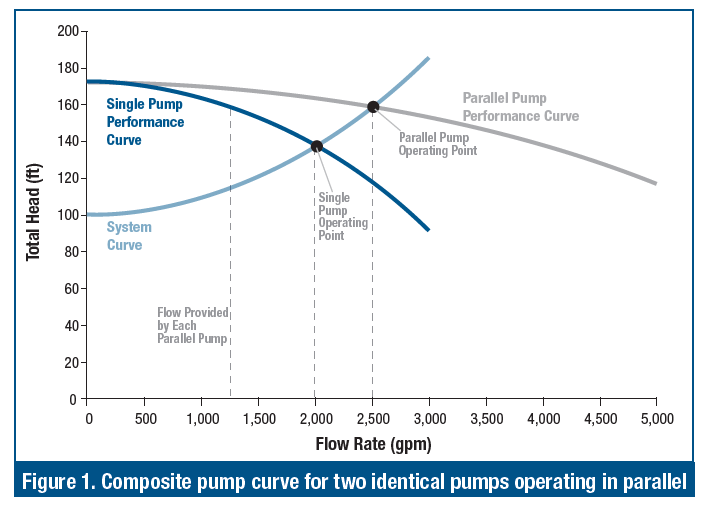Five Keys to Understanding Parallel Pump Optimization
Five Keys to Optimizing Parallel Pumping Systems.
When flow requirements vary, parallel pump systems are often an effective way to meet demand. Yet, like any system with multiple parts, engineers can often find ways to optimize parallel pumps to save capital cost and energy. Here are five keys to understanding how to get the most of this technology:
Minimize the number of pumps. Parallel systems consist of multiple pumps that share a common intake and discharge into a common header. As load increases, additional pumps ramp up to deliver the required flow. Sometimes, however, systems run multiple pumps when a single pump could meet flow requirements, bringing on additional pumps as needed. Operating more pumps than required to meet the system demand is inefficient and lowers reliability. So, remember, it is important to have a control system that stages the parallel pumps based on the demand.
Match pumps properly. Ideally, a parallel system should consist of pumps with similar total head at zero flow (shutoff) and their best efficiency flows. This way, multiple pumps will split the load evenly when running. If a system uses pumps with dissimilar heads in parallel, the pump with the higher head may wind up doing all the work. This could lead to a situation where the spare pump is putting zero flow into the system—which will lead to pump failure. The way to avoid this is to make sure all pumps have a similar heads when running at their best efficiency point and proper shutoff.
Remember, adding a second pump does not double flow. Adding a second identical pump will change the pump curve by adding the flow rate of each pump at a respective total head, but it will not double your system flow. To see how this works, consider Figure 1, which shows the single pump curve and the composite curve for both pumps operating in parallel. If the total head (the sum of the static head and friction loss) remained the same (in this case, about 140 ft.), pumping capacity would indeed double. Instead, as the flow rate rises, the additional friction head boosts the total head to approximately 160 ft, and the system curve intersects the parallel pump performance curve at 2500 gpm, which is a significantly lower flow rate than 4000 gpm. So. adding additional pumps will lower the flow rate for each individual pump due to additional friction loss in the system and it could result in the individual pumps operating at low efficiency or where they require shorter intervals between maintenance.

Parallel pumps work best in systems dominated by static head. Given the example above, where one plus one does not equal two, it should come as no surprise that parallel pumps provide the greatest increase in flow when used in systems that have high static heads and minimal piping friction. The less friction, the greater the flow increase when a second pump is operated. A good example of a system dominated by static head are lift stations and flood control systems. These systems generally use short, large-diameter pipes to move a lot of water a very short distance, usually over a dike or dam.
You can use a variable speed pump in a parallel system. Remember what we said about using identical pumps? Well, every rule has its exceptions. Variable speed control pumps provide flexibility and broaden the range over which you can operate a system most efficiently. For low flow demand, a single pump can gradually increase flow until it reaches maximum speed. Once there, additional pumps can come online and the variable pump behaves like any other constant pump running in parallel. To maximize efficient operation, all pumps in the system can operate at variable speed, but the controls need to ensure that the head for the multiple pumps is sufficiently matched.
One potential application is water boosting in a high-rise building. It is desirable to retain a constant pressure at faucets, toilets and showers, but flow varies throughout the day. In an apartment building, the one variable speed pump operating at minimum speed might serve the whole build at night and the additional pumps kick in when demand rises when people get ready.
SUBSCRIBE TODAY
Get the latest pump industry news, insights, and analysis delivered to your inbox.
